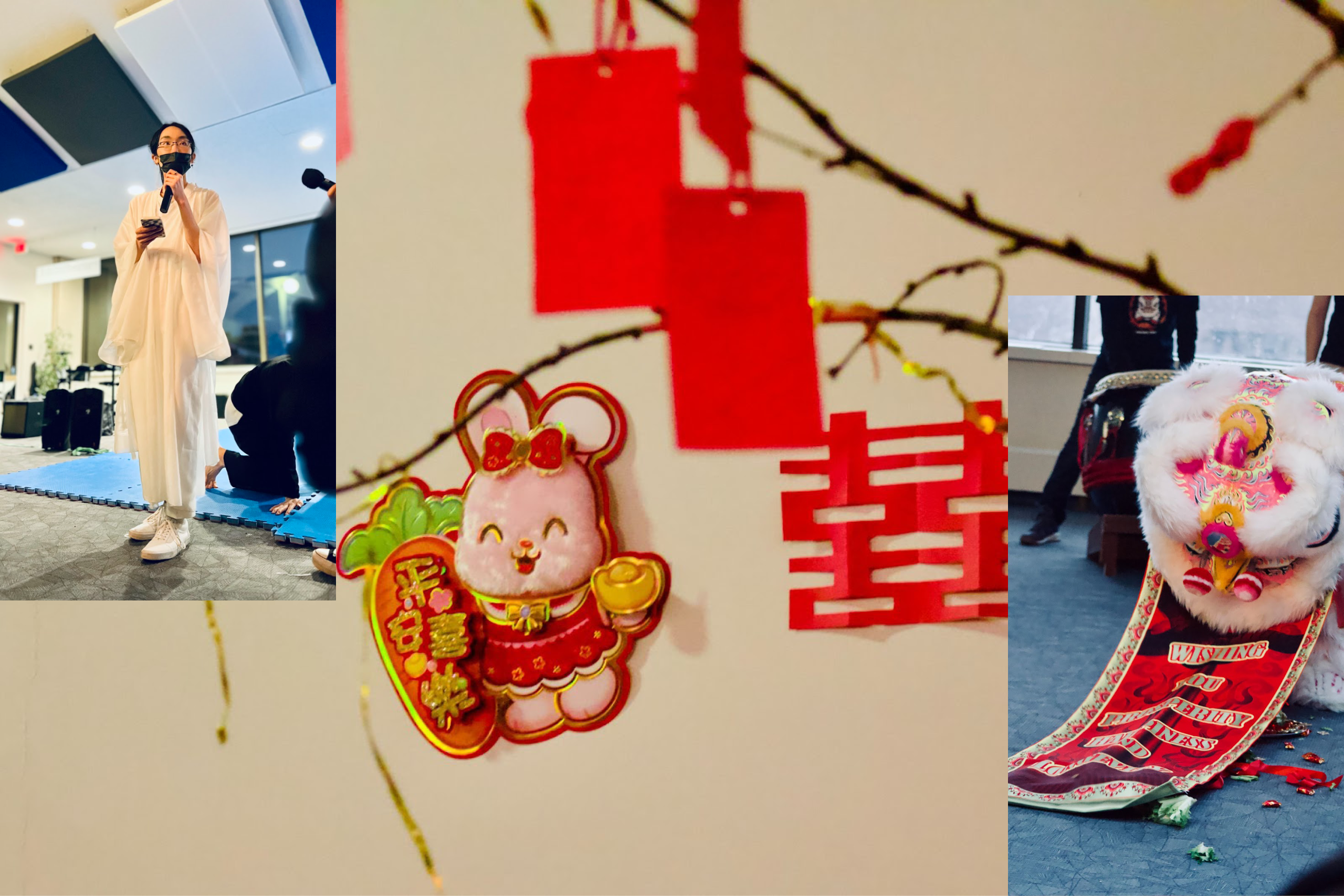The Lunar New Year is an umbrella term referring to the various celebrations marking the beginning of the new lunar year, such as the Chinese New Year, Seollal, and Tết Nguyên Đán. Each country has its own unique traditions and customs, but some things remain consistent across all interpretations of the holiday: culture, community and connection.
The Lunar New Year has always been close to my heart. Every year, it is an important time when the entire family gathers, and I have many fond and vivid memories of this celebration, even from childhood. In the days prior, we would clean the house and bathe, as doing so on the day would wash away the good luck and bring misfortune. Then, during the day, at school, we would have a splendid carnival with all sorts of Chinese activities and after, I would often go to Chinatown with my family, observing the various festivities and performances, such as lion dance, celebrating the occasion. And in the evening, the mahjong table is pulled out, red pockets are readied, and of course, a feast is prepared, usually by my grandma, for everyone to enjoy.
There is an unmistakable atmosphere of warmth, familiarity and nostalgia that comes with this annual celebration. Such feelings have ingrained themselves into the fabric of my being and identity. Especially being Canadian-born-Chinese and part of the diaspora of Chinese peoples, the Lunar New Year allows me the opportunity to connect with my heritage. Not only am I bound to my culture by the physical practices but also, by these intangible experiences shared by ancestors, which I will eventually share with my descendants.
I remember being told the legend of the Chinese New Year as a child in elementary school: there was a mythical beast named Nian who would eat the villagers at night. One day, a man appeared and said he’d stay the night while the villagers hid. The man put up red paper on the entrances to all the houses and set off firecrackers, scaring off Nian. This became a tradition, with households sticking various red papers, often with characters of luck and prosperity, around the house and, in China, families would set off smaller firecrackers outside.
Such an ancient tale still bears great significance to my present life, as these practices connect me to my past and will undoubtedly continue to influence my future. To me, the Lunar New Year is a celebration of my culture: eating the foods, wearing the clothes and practicing the traditions of the many generations who came before. In this way, it’s also a representation of connection; connection with community, connection with family, connection with my culture.
This sense of connection is now more important than ever in the midst of Asian hate crimes, exemplified by the recent Monterey Park Shootings on January 21st, 2023 and Half Moon Bay shootings on January 23rd, 2023. Such blatant and deplorable acts of discrimination extend from the global scale down to even being as local as within Edmonton, with the Chinatown stabbings homicide year, which resulted in the loss of Hung Trang and Ban Phuc Hoang.
It is more important now than ever to proudly showcase our cultures because if we back down if we display fear, then those who have and continue to attempt to oppress us will succeed in pushing us down. Though we must be cautious, we must also be unafraid. We must stand tall, strong, and proud, proud of the heritage of our ancestors, proud of the culture that many, Asian or not, love and support and have found their community in, proud of the connections that link us to our past, present and future, and link us to each other. We must stand together in defiance and continue to showcase ourselves with pride.
It was for this reason that I initiated my club’s Lunar New Year Festival and made collaboration so integral to the event. I wanted it to help uplift the community, fight against the wave of xenophobia that is plaguing the world and serve as a reminder that this is a community and, whether you celebrate the Lunar New Year or not, by participating in this celebration, you are also a part of our community. This support is what is needed to strengthen our ties to each other to stand strong against Asian Hate. This festival is in honour of those who lost their lives as a result of senseless acts of hatred and will foster and support a sense of connection, not only within the University’s community, but also the city as a whole.
Thus, whether you came to our Lunar New Year Festival or plan to in the future, I want to end this article by reminding you all: do not be afraid for the spirit of your community is always with you.
Photos by: Josia Jacome

